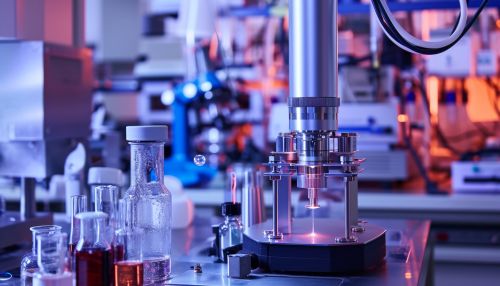Femtochemistry
Introduction
Femtochemistry is a branch of physical chemistry that studies chemical reactions on extremely short timescales, approximately 10^-15 seconds (one femtosecond, hence the name). This field of study involves the use of ultrafast lasers to observe and control chemical reactions at the atomic level. Femtochemistry has significantly contributed to our understanding of how chemical reactions occur at the molecular level, providing insights into the dynamics of bond breaking and formation.


History
The concept of femtochemistry was first introduced by Ahmed H. Zewail in the late 1980s. Zewail, a Nobel laureate, is often referred to as the 'father of femtochemistry'. His pioneering work in this field has led to the development of new techniques for studying chemical reactions, and has opened up new areas of research in chemistry and related fields.
Principles
Femtochemistry involves the use of ultrafast lasers to create pulses of light that are just a few femtoseconds in duration. These ultrafast pulses can be used to initiate chemical reactions, and to observe the dynamics of the reactions as they occur. The key principle of femtochemistry is the ability to control the outcome of a chemical reaction by precisely timing the laser pulses.
Techniques
There are several techniques used in femtochemistry, including pump-probe spectroscopy, time-resolved photoelectron spectroscopy, and time-resolved mass spectrometry. These techniques allow scientists to observe and control chemical reactions on the femtosecond timescale, providing a detailed picture of the dynamics of chemical reactions.
Applications
Femtochemistry has a wide range of applications, from basic research in chemistry and physics, to more applied areas such as materials science, biology, and medicine. For example, in materials science, femtochemistry can be used to study the properties of materials at the atomic level, leading to the development of new materials with improved properties. In biology and medicine, femtochemistry can be used to study the dynamics of biological processes, such as protein folding, and to develop new treatments for diseases.
Future Directions
The field of femtochemistry continues to evolve, with new techniques and applications being developed. Future directions for femtochemistry include the study of more complex chemical systems, such as biological systems, and the development of new techniques for controlling chemical reactions.
